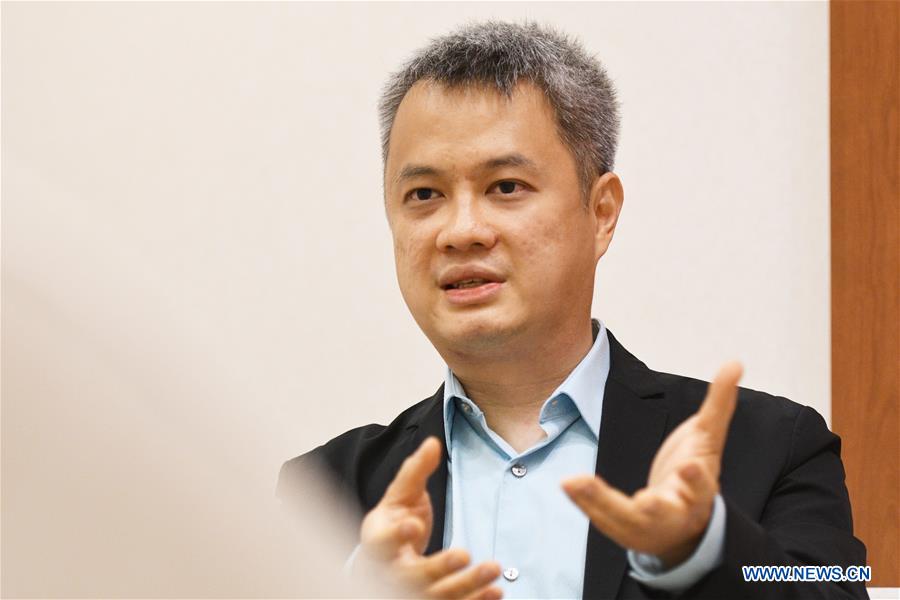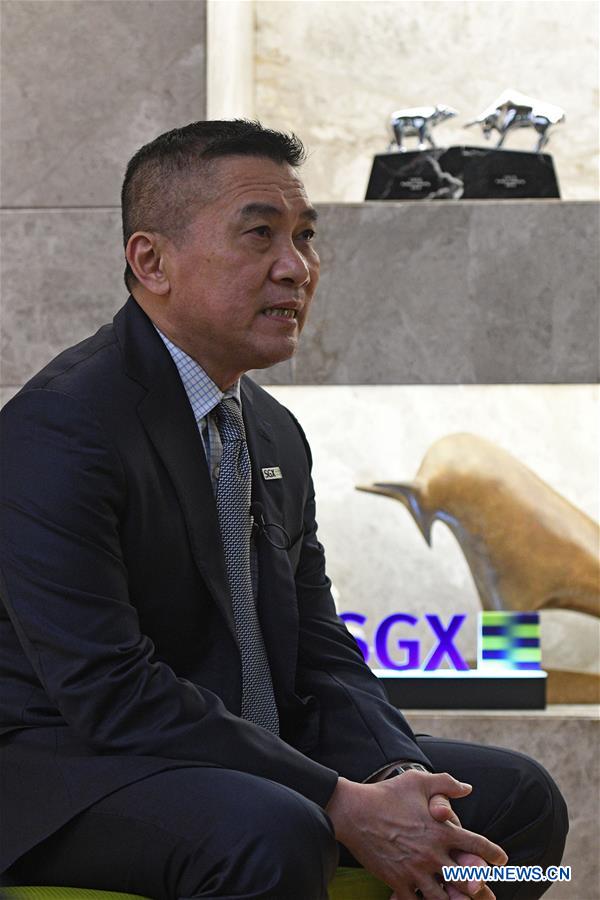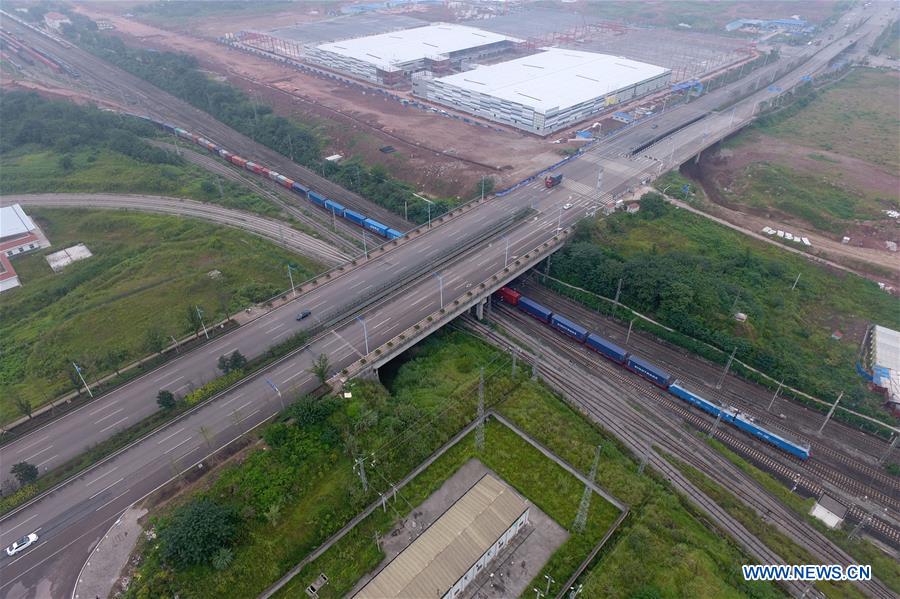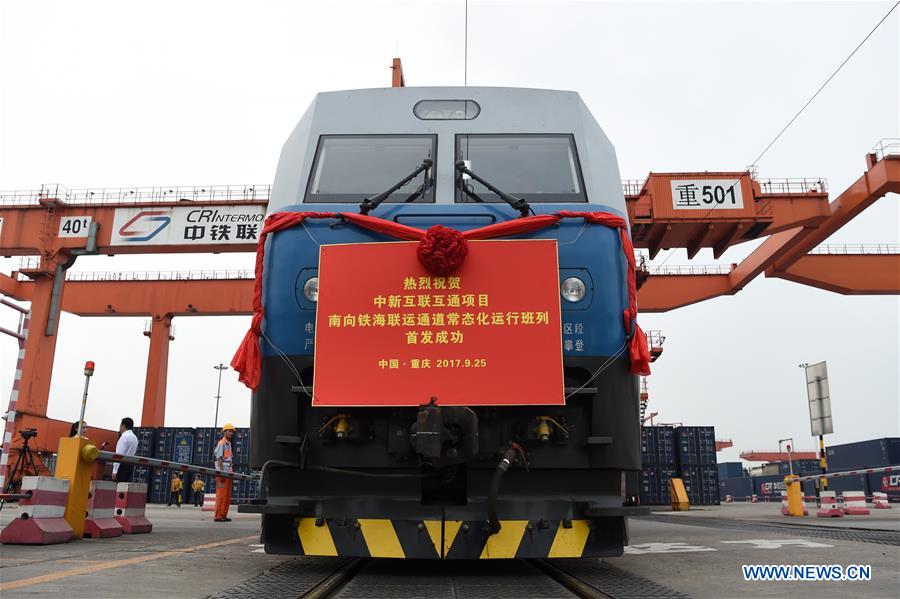China-Singapore Chongqing Connectivity Initiative strengthens link between western China, southeast Asia
Earlier in September this year, President of the Singapore Chinese Chamber of Commerce & Industry (SCCCI) Roland Ng made a trip to Chongqing Municipality in southwest China amid COVID-19, meeting with local officials and preparing to bring chamber members to visit Chongqing.
Chongqing is of special attraction for Singaporean businessmen and entrepreneurs, as the third intergovernmental cooperation project between Singapore and China, the China-Singapore (Chongqing) Demonstration Project on Strategic Connectivity (also known as Chongqing Connectivity Initiative, or CCI), is centered in Chongqing.
PHYSICAL AND DIGITAL CONNECTIVITY
Since its initiation on Nov. 7, 2015, China and Singapore have been building passages within the framework of CCI, focusing on the four areas of financial services, aviation, transport and logistics, information and communications technology, and enhancing the connectivity between western China and Southeast Asia, said Han Baochang, director of China-Singapore (Chongqing) Demonstration Initiative on Strategic Connectivity Administrative Bureau.
Within the framework of CCI, the New International Land-Sea Trade Corridor (CCI-ILSTC), a trade and logistics passage jointly built by western Chinese provincial regions and Singapore, serves as a bridge between the Silk Road Economic Belt and the 21st Century Maritime Silk Road.
Tan Lui Hai, director of Chongqing Connectivity Initiative Office, Singapore's Ministry of Trade and Industry, noted that trade volume in the first half of this year has risen by 20 percent through this corridor despite COVID-19.
"It's because of the inherent strength as well as the hard work put in by all the partners," he said, adding that it's these kind of hard work, development and investment that have managed to set the foundation and made the trade corridor competitive.
Singapore being a small country and economy, building external connectivity with all key partners and markets in the region will be very important, and one of which will be western China, Tan Lui Hai said.
The CCI-ILSTC has cut the procedure of changing containers and shortened the transport period by two weeks by no longer transporting goods from Chongqing to east China for offshore shipping. Instead, the goods are shipped from Qingzhou port in South China's Guangxi Zhuang Autonomous Region.
By employing multi-means of transportation and exploring the shortest routes, the corridor has reduced the time and cost for goods to be transported from western China to Singapore and other Southeast Asian countries, said Eric Khua Kian Keong, CEO of Vibrant Group Limited, a Singapore logistics company.
"As an intergovernmental project, CCI has provided entrepreneurs a good platform to tap business opportunities," he said. Khua, together with his partners in Singapore and Chongqing, are building a logistic park with a total investment of 250 million U.S. dollars in Chongqing. The project is expected to be completed next year.
Thanks to the CCI International Dedicated Connectivity, a dedicated data channel linking both sides which was launched in September last year, the second Joint Working Committee for CCI was held via video-conference on Oct. 20.
In another development, Singapore and Chongqing co-hosted the Smart China Expo (SCE) Online held in Chongqing in September this year. In her speech delivered at the SCE, Singapore's Minister for Manpower and Second Minister for Home Affairs, Josephine Teo noted that COVID-19 has made "going digital" central to everyday interaction, and Singapore and Chongqing have a shared commitment to be at the forefront of digital connectivity.
FINANCIAL BACKUPS AND BENEFITS
In the opinion of Loh Boon Chye, Chief Executive Officer of the Singapore Exchange, even though CCI is in its early days, it has made "commendable progress."
"If I look at the amount of financing that's been done, I think it's off to a very strong start, "Loh said.
According to him, during the past five years of CCI, there are over 100 projects that have raised almost 11 billion U.S. Dollars.
CCI has widened the financing capabilities or possibilities to companies in the western China region, Loh said, citing the Sasseur Real Estate Investment Trust from Chongqing that was listed on the Singapore Exchange in 2018 as an example. The listing has raised almost 400 million Singapore dollars (294 million U.S. dollars).
"I think we provide a good platform for Chinese companies going international, going global, and most significantly, going into the fast growing region in the ASEAN," Loh Boon Chye said.
Moreover, the 3rd China-Singapore (Chongqing) Connectivity Initiative Financial Summit will continue to be cohosted by Chongqing and Singapore from Nov. 23 to 24 this year, with a theme of "Deepening Financial Connectivity, Sharing New International Land-Sea Corridor" to focus on opportunities for deeper financial collaboration between the two sides.
POTENTIALS AND POSSIBILITIES
So far, 230 cooperation projects have been inked under the framework of CCI, with a total investment of 32.2 billion U.S. dollars, said Han Baochang.
Looking ahead, the future looks promising.
Through the CCI-ILSTC, goods can be transported more quickly between Southeast Asian countries and western provinces in China, which is of vital importance for the transportation of perishable goods, said Eric Khua Kian Keong.
Indeed, fresh citrus from Zhongxian County, Chongqing found their way to Singapore this year, which is a demonstration of how agriculture trade can be a new area of collaboration between Singapore and western China, said Tan Lui Hai.
Tan said that CCI is not bounded physically to a geographical location, meaning it can reach out to the whole of western China and Southeast Asian countries, which are two of the fastest economic growing regions in the world.
In the eyes of Roland Ng, CCI is an open platform with great potentials. "While COVID-19 has highlighted the importance of connectivity and modern services, I believe that enterprises from both sides can make use of the platform and find more opportunities in these industries," he said.
Yu Hong, a senior research fellow at the East Asian Institute of the National University of Singapore, also agreed on CCI's potentials.
As CCI-ILSTC serves as a bridge between the Silk Road Economic Belt and the 21st Century Maritime Silk Road (the two components of the China-proposed Belt and Road Initiative), the smooth implementation of CCI can, in the future, play a demonstrative role for the cooperation between China and other countries along the B&R, so as to attract more countries and regions to participate in the initiative.












